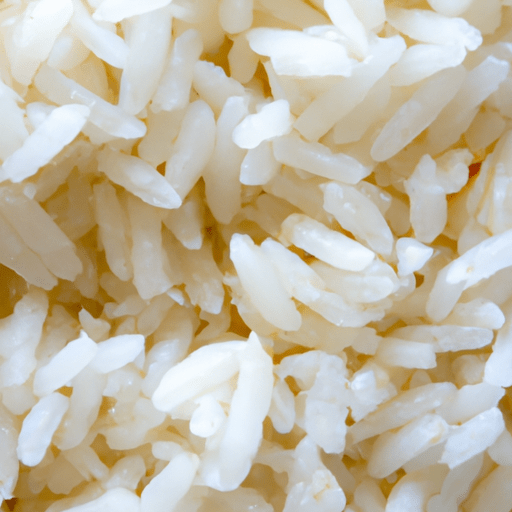The Marvels of Cooked Basmati Rice
Basmati rice is a long-grain variety known for its delicate aroma and exceptional flavor. When cooked to perfection, it becomes a delightful addition to countless dishes from diverse cuisines around the world. In this blog post, we will explore the characteristics, culinary versatility, nutritional value, as well as the fascinating history and facts surrounding cooked basmati rice.
Taste and Texture
Cooked basmati rice possesses a unique combination of fragrant aroma, lightness, and a subtly nutty flavor. With its slender, elongated grains, this rice variety maintains a fluffy and separate texture even after cooking. Each grain remains intact, making it a visually appealing option that pleases both the eyes and taste buds.
Culinary Uses
Basmati rice is a staple in many cuisines, particularly in South Asia and the Middle East. Its versatility allows it to complement a wide array of dishes, ranging from curries and biryanis to stir-fries and pilafs. This rice variety provides an excellent base for absorbing the flavors of various spices, herbs, and sauces. Furthermore, its long, non-sticky grains make it ideal for creating impressive rice pilaf presentations.
Nutritional Value
When it comes to nutrition, basmati rice offers several health benefits. A single serving of cooked basmati rice (approximately 1 cup) provides essential nutrients, such as carbohydrates, protein, dietary fiber, iron, and B vitamins. Basmati rice is also low in fat and has a low to medium glycemic index, making it a suitable option for individuals monitoring their blood sugar levels or following a balanced diet.
History and Fun Facts
Basmati rice has a rich history that stretches back over centuries. The word “basmati” is derived from the Sanskrit term meaning “fragrant.” It originates from the Indian subcontinent, particularly the foothills of the Himalayas, where the unique climate and soil conditions contribute to its exceptional qualities.
Interestingly, basmati rice was highly valued in ancient times and was often used as a tribute to emperors and rulers. Its aroma and flavor were considered a mark of quality and exclusivity. Today, basmati rice continues to be highly esteemed and is often associated with celebratory feasts and special occasions.
Did you know that authentic basmati rice can be aged for months or even years? Aging enhances the aroma, fluffiness, and distinct flavor of the rice. Additionally, the basmati rice grown in specific regions, such as the Pusa and Dehradun varieties, is renowned for its superior quality.
Conclusion
Cooked basmati rice is a culinary marvel that brings a touch of elegance and delectable flavor to a wide range of dishes. Its fragrant aroma, fluffy texture, and versatility in various cuisines make it a beloved choice for home cooks and professional chefs alike. Whether you’re preparing a fragrant biryani or a comforting rice pilaf, basmati rice is sure to elevate your culinary creations to new heights. Embrace the heritage and savor the delightful experience of cooking and enjoying this exceptional rice variety.
Now, armed with this knowledge, it’s time to don your apron and embark on a culinary adventure with basmati rice as your trusted companion!
Cooked Basmati Rice:
Origin: Basmati rice is believed to have originated in the Indian subcontinent, specifically the foothills of the Himalayas. The word “basmati” is derived from the Sanskrit word “vasmati,” which means fragrant. It has been cultivated for centuries and is highly regarded for its unique flavor and aroma.
Common Uses: Cooked basmati rice is a versatile ingredient used in a variety of dishes worldwide. It is a staple in Indian cuisine and is commonly used to make biryani, pilaf, pulao, and plain steamed rice. Basmati rice is also popular in Middle Eastern and Persian cuisines, where it is often served with stews, kebabs, and grilled meats.
Nutritional Benefits: Basmati rice is a good source of carbohydrates and provides energy to the body. It is low in fat, cholesterol-free, and sodium-free, making it a healthy choice for those following a balanced diet. It also contains essential nutrients such as vitamins, minerals, and dietary fiber, although the fiber content is lower compared to other whole grains.
Unique Properties: Basmati rice has a distinctive long, slender grain shape with a soft, fluffy texture when cooked. Its most distinguishing feature is its delightful aroma, described as nutty or popcorn-like, which sets it apart from other varieties of rice. Basmati rice has excellent elongation upon cooking, meaning the grains remain separate and do not clump together.
Historical Significance: Basmati rice has a rich history that stretches back thousands of years. It has been grown in the Indian subcontinent since at least the 2nd millennium BCE. Basmati rice has also been mentioned in ancient Indian texts and poems, reflecting its cultural significance. In 2016, it was granted the Geographical Indication (GI) status by the Indian government, recognizing its unique origin and qualities.
Please note that the nutritional information provided is based on general knowledge and may vary depending on the specific type of basmati rice and cooking methods used.




Use the share button below if you liked it.
It makes me smile, when I see it.